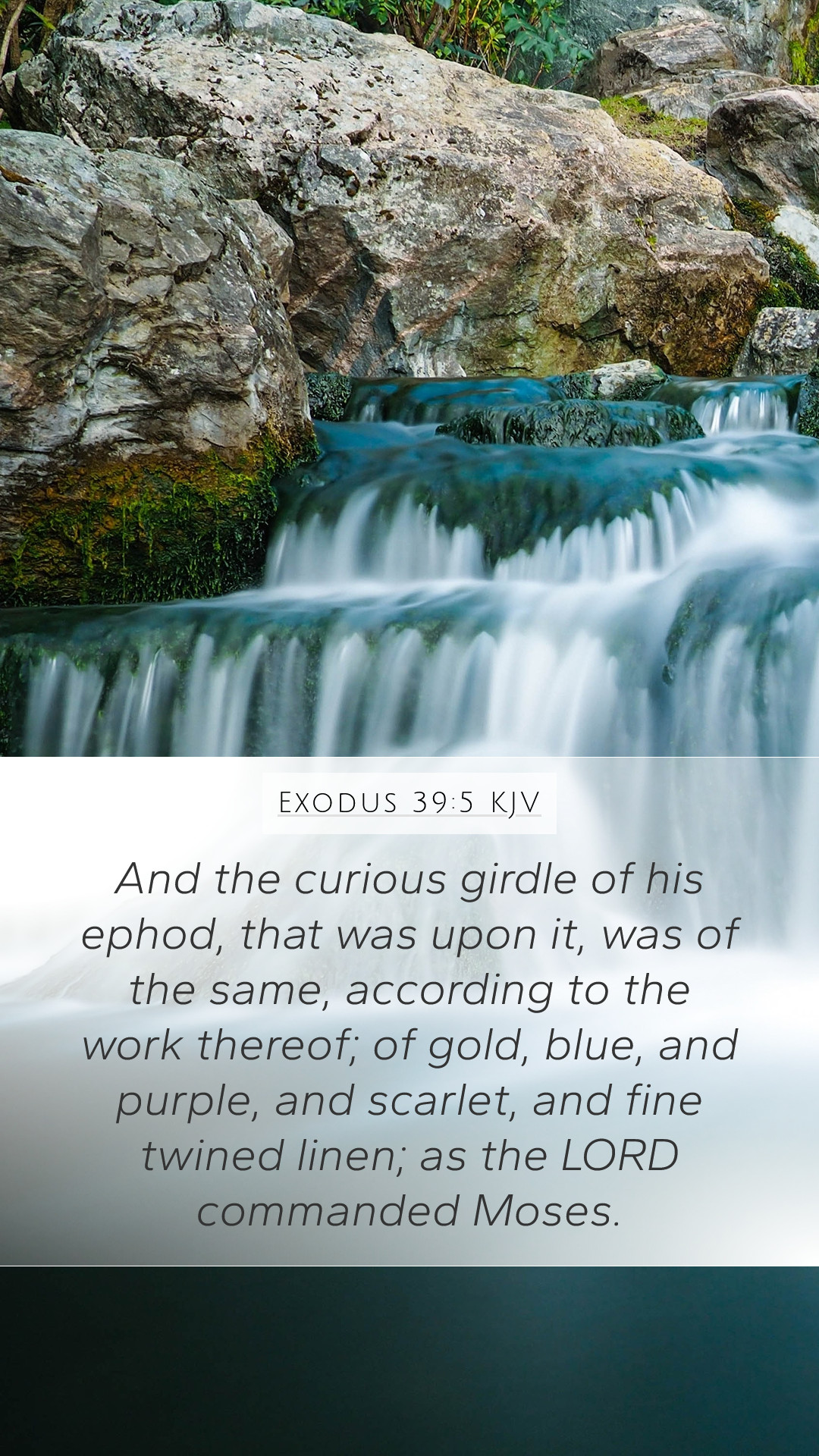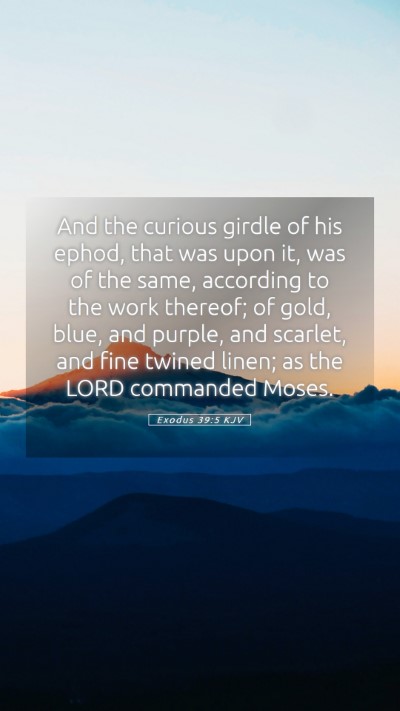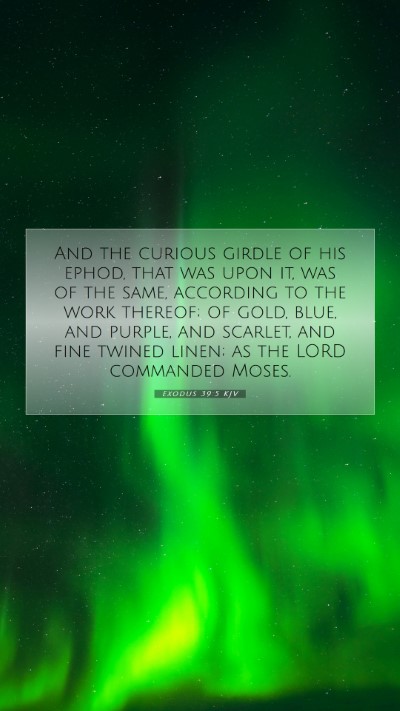Understanding Exodus 39:5
Exodus 39:5 states:
"And the skillfully woven band of the Ephod, which was upon it, was of the same, according to the work thereof; of gold, blue, and purple, and scarlet, and fine twined linen, as the Lord commanded Moses."
Overview of the Verse
This verse describes the meticulous design and craftsmanship of the priestly garments, particularly focusing on the ephod, which was a prominent item worn by the high priest. The ephod symbolized the high priest's role as an intercessor between God and the people of Israel.
Biblical Commentary Insights
-
Matthew Henry's Commentary:
Henry emphasizes the precision required in the creation of the priest's garments, highlighting how every detail of the ephod was designed according to God's specifications. He illustrates how this careful craftsmanship reflects the holiness of God and the importance of worship in approaching Him.
-
Albert Barnes' Notes:
Barnes notes that the ephod was made of rich materials signifying the honor and dignity associated with the priestly office. He suggests the materials used—gold, blue, purple, scarlet, and fine linen—reflect the beauty and glory of God's presence.
-
Adam Clarke's Commentary:
Clarke discusses the significance of the colors and materials used. He reflects on how these elements point to deeper spiritual truths, symbolizing various aspects of God's character and the nature of Christ as the ultimate high priest.
Meaning and Significance of the Verse
Exodus 39:5 is not just a description of clothing; it serves several important functions in biblical interpretation:
-
Divine Authority:
The detailed instructions for the ephod show that God is involved in the minutiae of worship. This demonstrates His desire for order, beauty, and reverence in how He is approached.
-
Symbolism of Colors and Materials:
The use of gold can represent divinity and kingship, while blue often symbolizes the heavenly nature of God's calling. Purple signifies wealth and majesty, and scarlet can represent sacrifice, reminding us of the blood of atonement.
-
Role of the High Priest:
The ephod, as a piece of the priestly garments, serves as a reminder of the mediatorial role of the high priest. It points forward to Christ, who serves as our high priest, bridging the gap between a holy God and sinful man.
Bible Verse Explanations and Insights
The meaning of Exodus 39:5 extends into various areas of biblical study:
-
Spiritual Reflection:
Just as the high priest had to wear specific garments that set him apart, believers are called to set themselves apart for God, reflecting His holiness in their lives.
-
Application to Worship:
This verse encourages worshipers to engage in heartfelt worship, recognizing the importance of approaching God with reverence and respect, as seen in the details prescribed in the Tabernacle's construction.
-
Historical Context:
Understanding the historical context of Israel's worship structure provides deeper insights into the significance of the ephod and its symbolism within the broader narrative of Scripture.
Cross References
This verse connects with several other scriptural themes and passages:
- Exodus 28:6-14: Discusses the making of the ephod in detail.
- Hebrews 4:14: Speaks to the ultimate high priest, Jesus Christ.
- 1 Peter 2:9: Describes believers as a royal priesthood, showing the implications of priestly duties in the life of Christians today.
Conclusion
In summary, Exodus 39:5 offers a profound insight into the nature of God's design for worship and the role of priests in Israel. It serves as a reminder of the significance of preparation and holiness in approaching God, and it points forward to the ultimate fulfillment found in Jesus Christ, our high priest. For those participating in Bible study groups or engaging in online Bible study, the reflections on this verse can lead to deeper understanding and appreciation of God's meticulous attention to detail in worship, prompting discussions on how to apply these lessons today.


